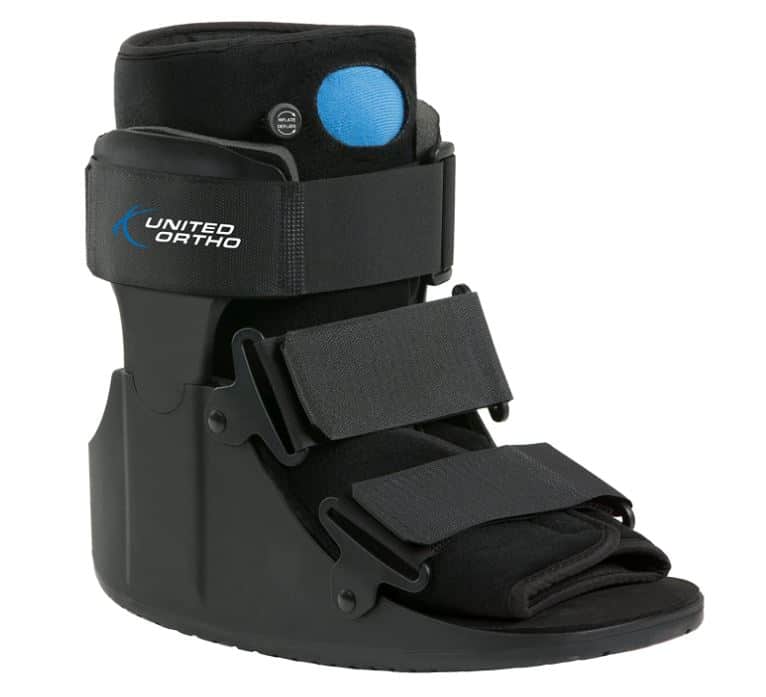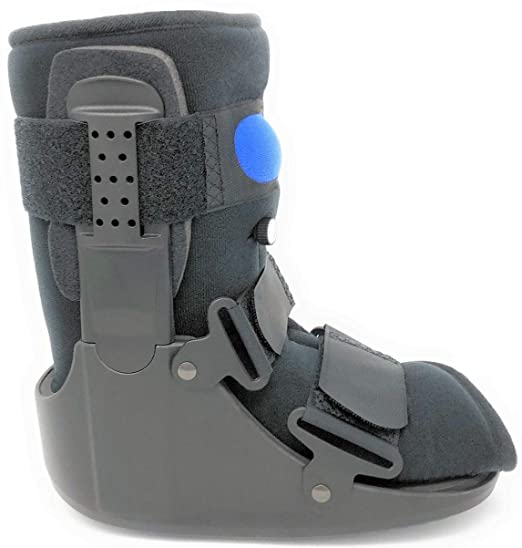Can I Ride a Motorcycle in a Cast? It is common for individuals who have sustained injuries resulting in breaks and fractures to their wrists, hands, ankles, and legs to wonder if they can ride their motorcycles when healed. And the answer depends on the severity of the injury. Some people can ride as soon as their casts are removed without any issues.
However, others may need to wait until their bones heal before returning to motorcycle riding. If you’ve suffered a break requiring surgery, you should wait until your doctor gives you clearance before getting back on your bike. Additionally, if you’ve broken a bone near your wrist, it might make riding difficult because of the lever and throttle control needed from your hand.
Is It Possible to Ride a Motorcycle with a Broken Ankle, Foot, or Leg?
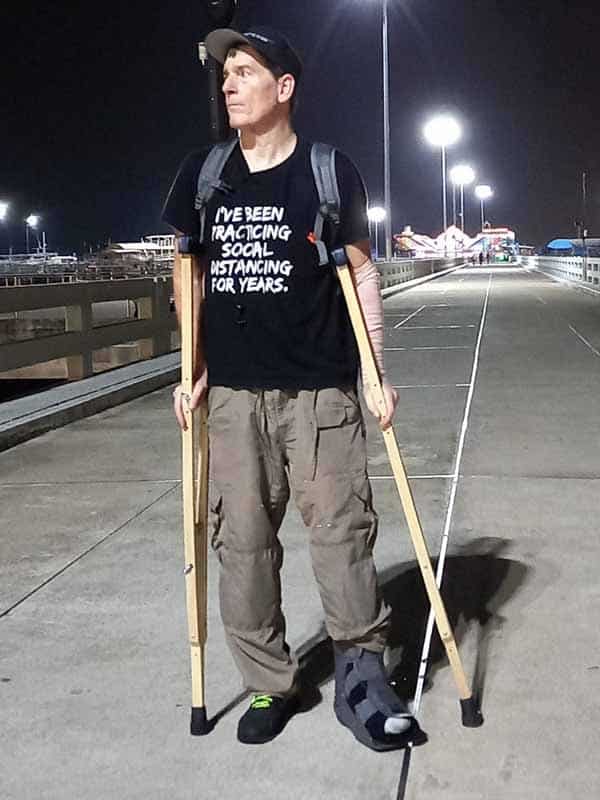
You might wonder if riding after breaking your foot, ankle, or leg is possible. The short answer is yes! The more complicated question is whether riding with a cast is wise. Riding a motorcycle with a cast seems like a hazardous endeavor with the potential for injury at every turn. You can do it with some adjustments to your riding and some modifications to your gear or bike. Keep reading to find out more about riding with broken bones and casts.
Can I Ride a Motorcycle in a Cast? The cast Is on My Leg, Ankle, Foot, Arm, or Wrist.
Yes! For sure, it is possible, I know that personally from my own experiences in 2022.
A fractured ankle can be an unfortunate and painful injury. An often-overlooked aspect of this type of injury is that there may be an impact on your ability to operate a motorcycle. If you suffer from a fractured ankle, the question of whether you will be able to ride a motorcycle becomes essential. The severity of the fracture will determine your level of impairment and, thus, your ability to operate a motorcycle.
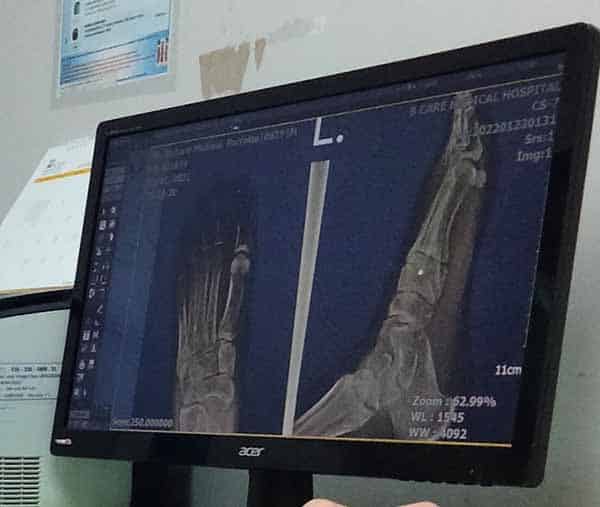
In January 2022, I injured my ankle while riding to the Lauda Air Flight 4 crash site in Phu Toei National Park, Thailand. I was in a cast and foot brace for more than two months. I was in a situation where I needed to ride within a week of my injury, it was possible, but I had to make some modifications. First, ensure that your cast is fiberglass or another waterproof material unless you are confident you will never be riding when it rains.
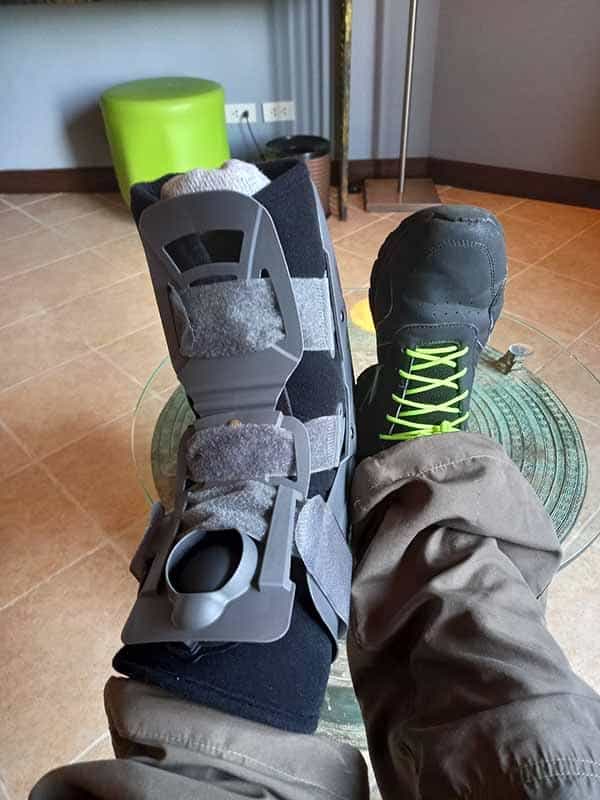
Second, ensure the bike has a kickstand to use your foot peg for balance when climbing up on the bike or dismounting. However, remember that your cast may not sit comfortably on the brake pedal or hand grips; as such, keep this limitation in mind before riding. I injured my left ankle, so shifting was an issue. I glued a plastic hook on the back heel of the foot and ankle brace. In this position, I was able to upshift by moving my foot in front of the gearshift and engaging the shift lever with the hook on the back heel of the brace.
Getting on the motorcycle and starting from a stopped position was the most challenging thing for me in riding. Getting off the motorcycle was not so tricky but required care. Once the bike was moving, it was pretty easy to ride, and up-shifting, downshifting, and braking were much easier than I imagined.
You can consider this product: United Ortho Short Air Cam Walker Fracture Boot on Amazon
When Can One Ride Motorbikes After a Tibia/ Fibula Fracture?
It’s difficult to say when you can start riding your bike again. Depending on the type of fracture (tibia vs. fibula), how long ago the injury was sustained, and your level of activity before the injury occurred will all be factored in determining your recovery time. In general, if the fracture is less than eight weeks old and you were sedentary before the injury, it is recommended to wait four weeks.
Can I Ride a Motorcycle in a Cast with a Broken Leg?
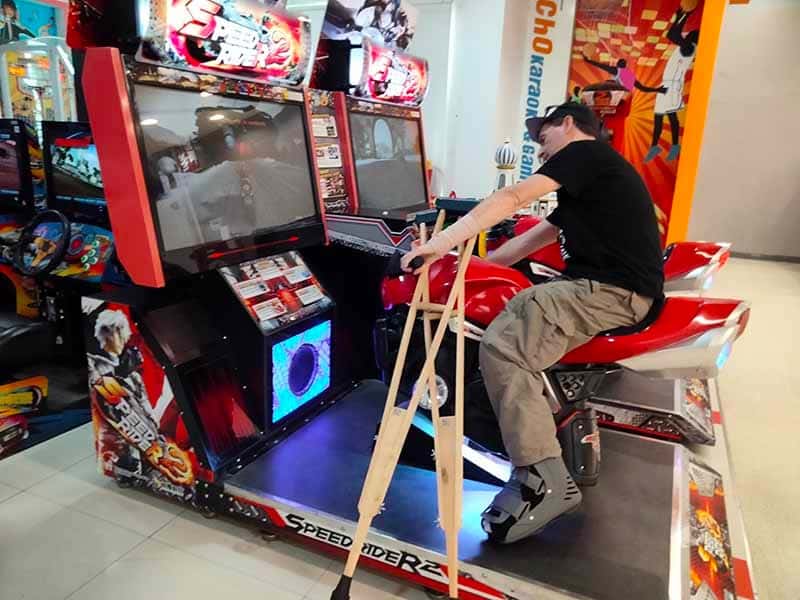
Yes, you probably can, although your Doctor would not recommend it. Depending on the severity of your break, there could be further complications, such as nerve damage and blood loss. Even if you have had surgery for your injury and can walk without pain, you may not be ready to ride your bike again. In the end, you must understand your own body and limitations.
Riding a Bike After a Broken Leg/ Ankle?
The general medical recommendation for riders with broken legs/ankles is that they should avoid riding a bike while they are in the process of healing from an injury. This is because riding can place undue stress on an injury site and can make the healing process take longer. But if your break is healing well and you feel comfortable with trying to ride, it is possible.
What Are the Legalities of Riding with Foot, Ankle, or Leg in a Cast?
Suppose you have a cast on your foot and have been worried about riding your motorcycle while in the cast; know that this is not illegal in most jurisdictions. Although it is probably legal to ride a bike with a broken wrist, hand, or ankle, there are many things to remember before riding with an injured limb. It is not advised to get back on your bike if you are experiencing any pain from the injury because of how dangerous it can be for yourself and others around you.
Can I Ride a Motorcycle in a Cast with a Broken Wrist?
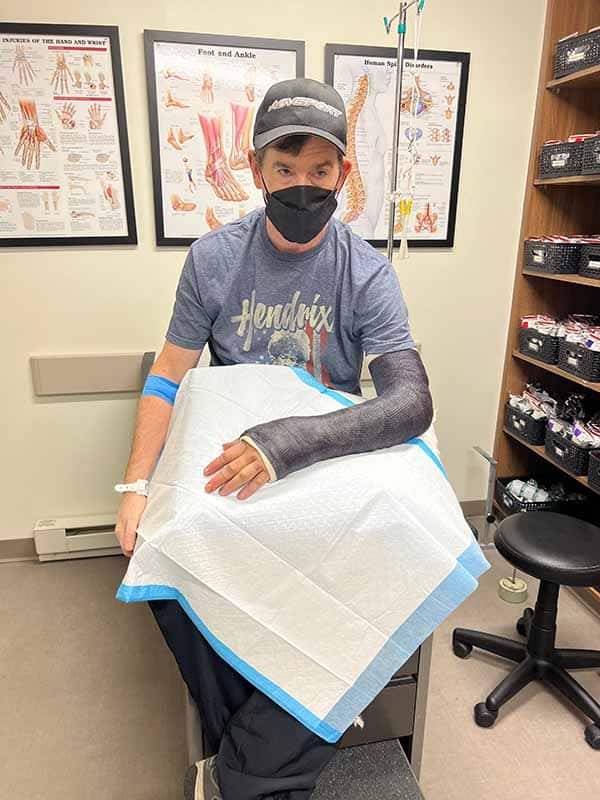
In September, nine months after my ankle injury, I broke both bones in my left wrist when I crashed my Kawasaki Ninja 400 at Summit Point Raceway in a fast left-hand turn.
While riding a motorcycle with a broken wrist may be physically possible, it is much more complicated, painful, and potentially dangerous than writing with a cast or brace on your leg, ankle, or foot.
The range of motion your wrist needs to operate the clutch throttle and break properly is much more than when riding with a cast or brace on your foot, ankle, or leg.
Pulling in the brake or clutch lever and twisting the throttle may be very difficult and painful with a broken wrist. I rode an ATV using just my right arm and hand without too much problem, but I did not use the clutch. To get moving. I would rock the ATV forward and then pop it into gear. Once moving, when stopped, I would try to stop on a hill where it would be easy to get rolling again.
Riding a motorcycle is much more difficult with an injured wrist. An ATV has a trigger throttle that you can operate by pushing with your thumb, whereas on a bike, you must be able to twist your wrist to use the throttle. It’s also a bit harder to ride a motorcycle from a stopped position without using the clutch than an ATV.
So, can you ride a motorcycle with a broken wrist? Some say there’s no reason why not, but others disagree. It all depends on the break type, the severity, and what sort of physical therapy you go through. Based on my own experience, I advise against it and wait for a full recovery before trying to ride your motorcycle again.
Can You Ride a Bike with a Broken Arm?
Yes, unlike a broken wrist, you can still ride your bike if you have a broken arm, and your cast does not limit your mobility or the ability to extend your arm. If you have a cast around the elbow, putting the arm in a 90° position, then riding is not really going to be an option. There are some things to consider before hopping on the bike. First, of course, is that your arm should not be in any pain at all. If the break is quite severe and causes pain, this may not be an option for you.
Is It Legal to Ride with a Broken Arm?
In most areas, unless there are specific laws that prohibit people from riding motorcycles with cats or braces. Check with your local jurisdiction to be sure. If you do ride, you should take additional precautions and be aware of your limitations. Usually, a motorcyclist should use both hands when turning, braking, and shifting gears. The rider must also be mindful of the increased risk of losing control of the bike. If the person feels they cannot control the bike or are in pain, they should not continue riding.

I've diligently categorized my motorcycle gear recommendations into all available categories, with the aim of providing you with a comprehensive analysis that showcases the absolute best options for all your needs. These items are the culmination of in-depth research, extensive testing, and personal use throughout my vast experience of 50+ years in the world of motorcycling. Besides being a passionate rider, I've held leadership positions and offered consultancy services to reputable companies in over 25 countries. To See Top Picks and the Best Prices & Places to Buy: Click Here! |
M/M


